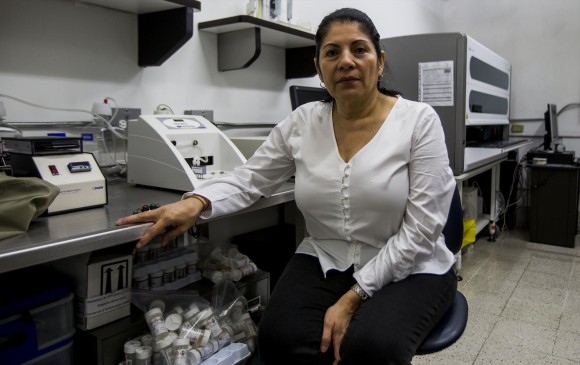
Today we discuss with Professor Gloria I. Sanchez her latest research into DNA methylation as a triage strategy for women testing HPV positive at the cervical screening. Dr Sanchez is based in Colombia and has long been interested in improving cancer screening in low and middle-income countries (LMIC).
Why DNA methylation?
The rollout of primary HPV cervical screening has energised the search for a triage test with high sensitivity and increased specificity and positive predictive value (PPV) for accurately identifying women at high risk for CIN3+ among those who test positive for HPV. Currently, the use of reflex (on the same sample) liquid‐based cytology (LBC) is the golden standard but this test is subjective, cannot be automated and generally has low sensitivity (~50–70%) for CIN2+. Triage strategies such as HPV16/18 genotyping together with or without LBC can be (partially) automated but remain a marker of infection not of the carcinogenic potential of the lesion and still necessitate clinical follow-up of those testing positive for other high-risk (hrHPV) genotypes. The p16/Ki67 immunostaining test is more sensitive than standard LBC and identifies women at elevated risk of CIN2+, but the interpretation is subjective and this test is expensive and complex. Furthermore, LBC is not widely available in most low and middle-income countries (if cytology is offered at all it is usually conventional pap smear).
An objective triage strategy, such as DNA methylation, could be automated and incorporated as a reflex molecular test following HPV screening which would allow triage without additional visits to the health care system. Further, since it is a marker for the carcinogenic potential of the lesion allows direct referral for treatment. This is very advantageous especially for populations that have limited access to access health care services like those in remote rural settings.
Validating methylation in a sample of Colombian women
The current study compares the performance of S5 classifier, a test that quantifies the methylation sites in the genome of HPV16, 18, 31 and 33 and on the human EPBL43 gene against the performance of Pap smear and HPV 16/18 genotyping for the detection of CIN2+ in women recruited as part of the ASCUS-COL study. The ASCUS-Col study aims to establish the best strategies to manage lesions in women who have had cytology with a result of ASC-US (Abnormal Squamous Cells of Undetermined Significance).
All high-risk HPV positive (hrHPV+) cases with a confirmed diagnosis of CIN2+ (n=183) and an equal number of age-matched hrHPV+ controls with <CIN2 were selected from the 2,661 women followed-up for 2 years in the study. Baseline specimens of these women were tested by S5 methylation test blinded to cytology, histology and initial HPV test results. Importantly all histological samples were read by an expert histopathologist increasing the reliability of the CIN2+ diagnosis.
Methylation was found to have significantly better sensitivity for CIN3+ (65%) than both cytology (37%) and HPV 16/18 genotyping (50%). Equal performance was observed for CIN2+. The specificity of S5 (76%) was also better than the specificity of HPV 16/18 genotyping (67%) and similar to the specificity of cytology (76%). The aim is to detect women at risk of developing the high-grade disease for immediate referral to treatment. Therefore, in addition to increasing the specificity, for a triage test a higher sensitivity is crucial. These results support the potential use of methylation as a viable triage strategy.
Future research and potential
This study evaluated the performance of methylation in women who have tested positive for HPV and had abnormal cytology, the next step is to show similar results prospectively in a screening population. Currently, there is limited evidence that methylation works in such a setting. For example, methylation was shown to be as good as cytology triage in a post hoc analysis of women from a large population-based screening cohort (within an RCT) with 14-year follow-up. But further research is needed to fully understand how long it takes for the disease to develop in those who test methylation positive but have no disease on biopsy. This needs to be confirmed so that there is confidence in treating women based on a positive methylation test without waiting for biopsy proof of disease. Not only could this reduce health care visits but could result in smaller treatments with fewer side effects.
Currently, the S5 classifier is a test based on DNA methylation of the late regions L1 and L2 of HPV16, HPV18, HPV31 and HPV33 combined with the promoter region of human tumour suppressor gene EPB41L3. In the future, it will be possible to have mass sequencing of multiple methylated sites of the host and HPV genome in one assay. These several markers can complement each other and lead to significant increases in the sensitivity of the test.
At this point, the methylation test is a sophisticated test. However once methylation is shown to be an attractive alternative to HPV 16/18 genotyping in developed countries industry may be willing to develop a methylation tests that work in conjunction with the HPV test, in effect streamlining the process. Allowing, for example, the possibility of reflex triage for self-samples (something not possible now). Further, methylation is a marker of deregulation of the carcinogenesis process and hence could be used to identify the risk of developing other cancers – an attractive proposition in the era of personalised medicine.
The views expressed are those of the author. Posting of the blog does not signify that the Cancer Prevention Group endorse those views or opinions.

Leave a Reply